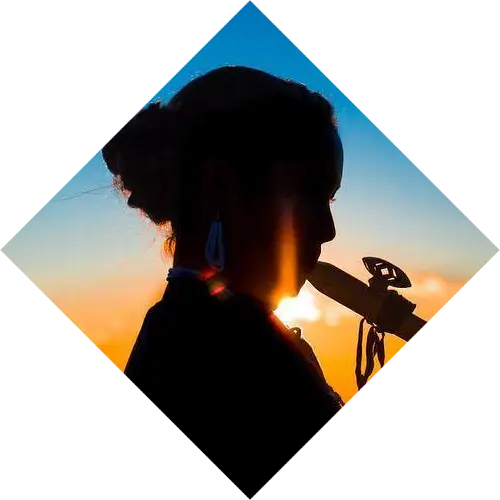
Looking to get up close with nature in a way you won’t find anywhere else? Cherokee, NC is one of the best spots in the Southeast for unforgettable wildlife encounters. From elk grazing in open fields to rare bird sightings along peaceful trails, Cherokee offers the kind of outdoor experience that draws nature lovers, photographers, and families alike.
Whether you’re hoping to catch the bugle of a bull elk in the fall, snap the perfect shot of a scarlet tanager, or just enjoy the quiet thrill of spotting deer at sunrise, this guide will show you the best places to see wildlife in Cherokee, NC, plus when to go, what to bring, and how to do it all safely and respectfully.
Best Places to See Wildlife in Cherokee
These locations are where you’re most likely to encounter the majestic and mysterious residents of the Smokies.
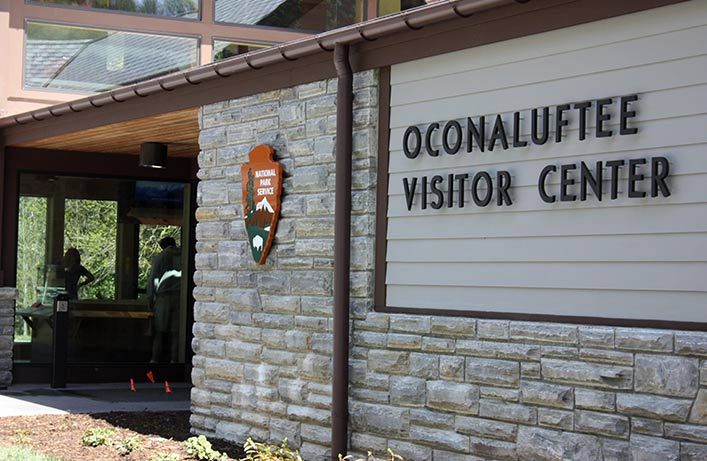
Oconaluftee Visitor Center & River Trail
Where to see elk in Cherokee, NC? This is the place. Just off Newfound Gap Road, this peaceful riverside trail is often bustling with elk at dawn and dusk. You’ll also see wild deer, and maybe even a black bear (from a safe distance, of course).
Great Smoky Mountains National Park
Stretching into Cherokee’s backyard, this national park is a wildlife lover’s paradise. Think black bears padding across hiking paths, deer bounding through valleys, Elk, rabbits, and countless birds singing from the treetops.
Mingus Mill Area
This serene historic site isn’t just for history buffs; the elk love it too. It’s quieter than other spots and perfect for catching a glimpse of wildlife without the crowds.
Great Smoky Mountains National Park
Stretching into Cherokee’s backyard, this national park is a wildlife lover’s paradise. Think black bears padding across hiking paths, deer bounding through valleys, Elk, rabbits, and countless birds singing from the treetops.
Blue Ridge Parkway Overlooks
Panoramic views and birdwatching bliss. Bring your binoculars and scan the skies for hawks, falcons, and eagles soar above the valleys, while colorful songbirds glide through the treetops below.
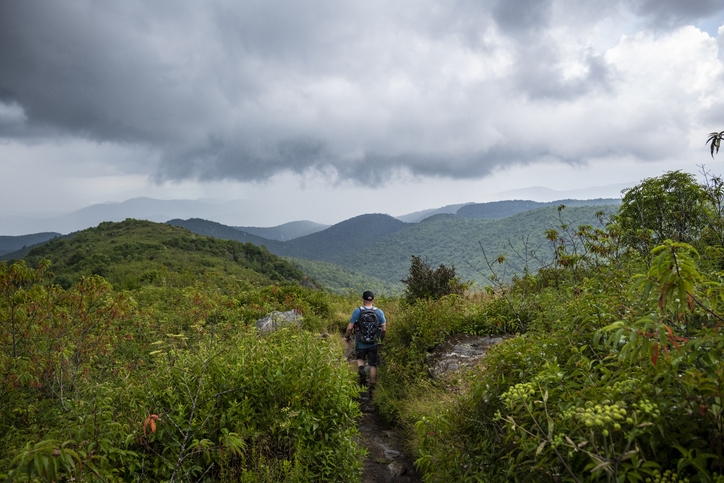
Where to See Elk in Cherokee, NC
Elk were reintroduced to the Great Smoky Mountains in 2001, and Cherokee has become one of the best places to see them in the wild. Today, healthy elk herds roam fields and river valleys around town, especially near the Oconaluftee Visitor Center and along the River Trail.
Best Times to Spot Elk
Early mornings and evenings are ideal, as elk are more active during cooler parts of the day.
Fall (mid-September to late October) is the rut season. During this time, bulls compete for mates, and you may hear their distinct bugle calls echoing through the valley.
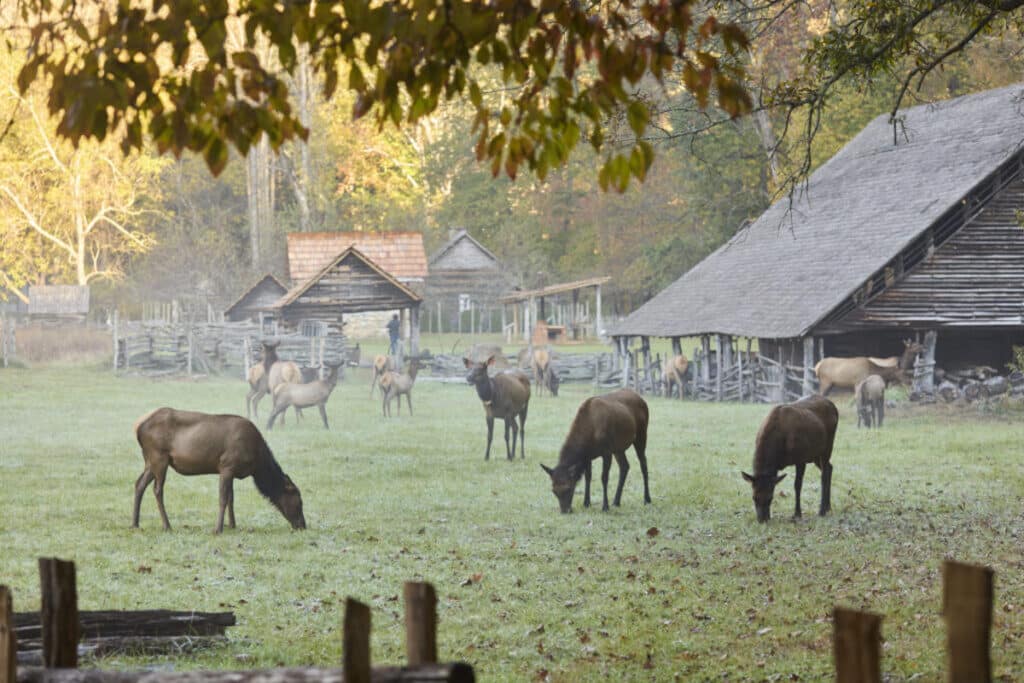
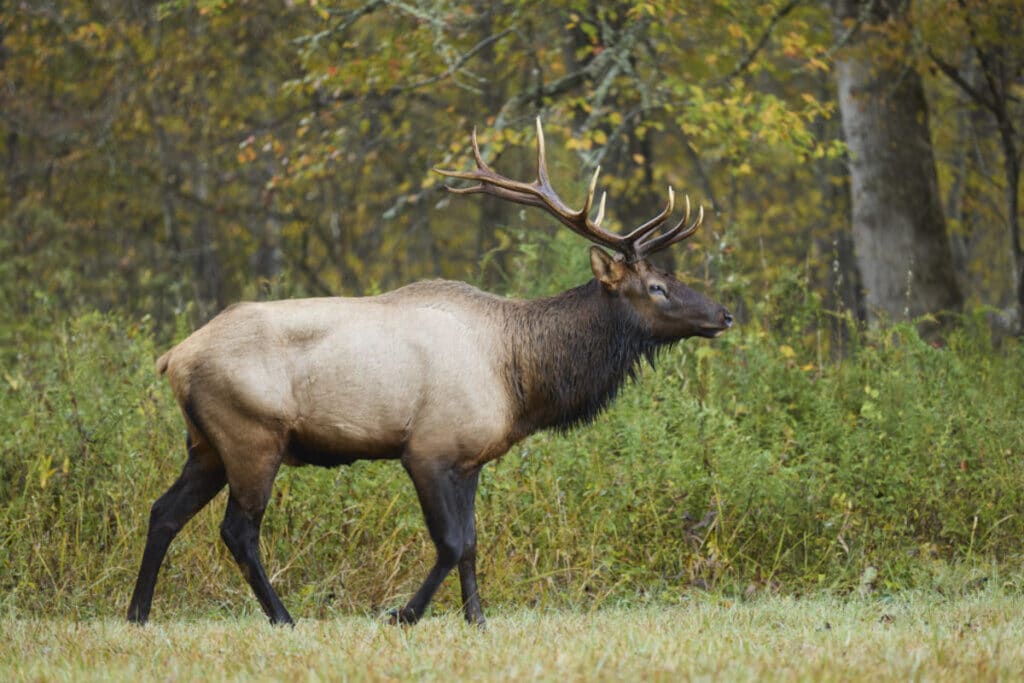
Safety Guidelines for Elk Viewing
Elk are large, wild animals, and they can be unpredictable, especially during rut season or when protecting calves. For your safety and theirs:
- Be aware that approaching too closely can lead to fines or injury on both tribal lands and in the Great Smoky Mountains National Park.
- Always keep a minimum distance of 50 yards (150 feet) from elk.
- Do not approach or touch elk calves, even if they appear alone.
- Use binoculars or a camera with a zoom lens to observe and photograph wildlife safely.
Elk Conservation Efforts
The return of elk to this area is the result of ongoing conservation efforts led by the Eastern Band of Cherokee Indians in partnership with the National Park Service. Responsible wildlife viewing helps ensure these animals remain a part of the Cherokee landscape for generations to come.
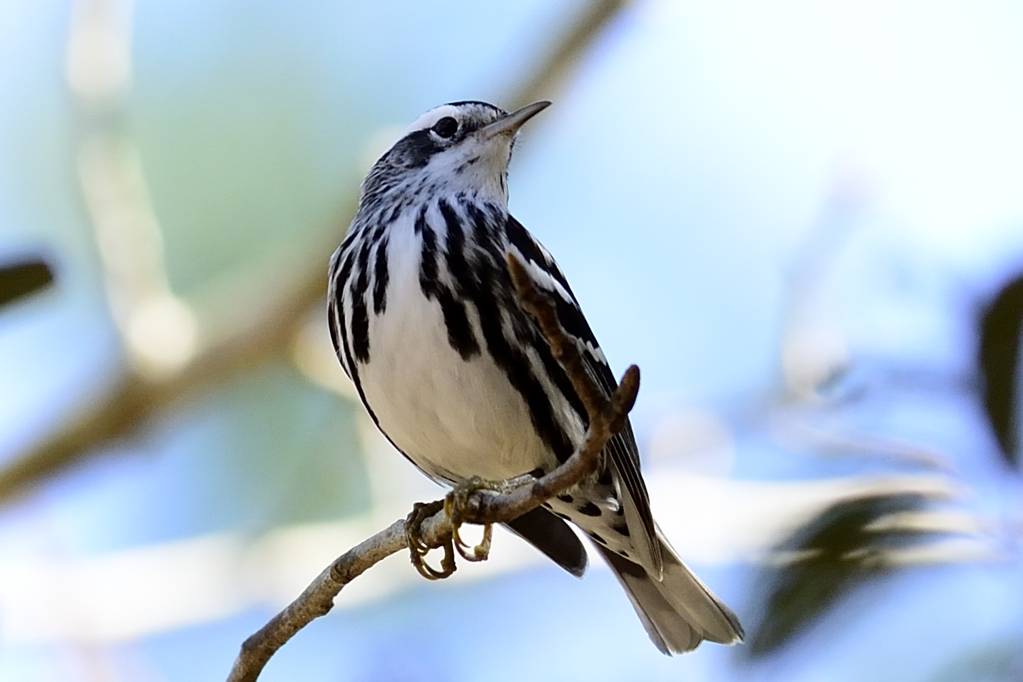
Notable Bird Species to Watch For
Many of the following birds can be seen along forest edges, riverbanks, and high-elevation overlooks:
- Wood Thrush
- Hooded Warbler
- Scarlet Tanager
- Rose-breasted Grosbeak
- Ruby-throated Hummingbird
- Indigo Bunting
- Red Crossbill
- Spotted Sandpiper
- Pine Siskin
- Louisiana Water Thrush
- Kingfisher
Cherokee Legend: The Kingfisher
In Cherokee tradition, the Kingfisher earned its sharp, pointed beak when other animals helped craft it into a fish spear. The bird has since been known as an expert fisher and symbol of skill and precision.
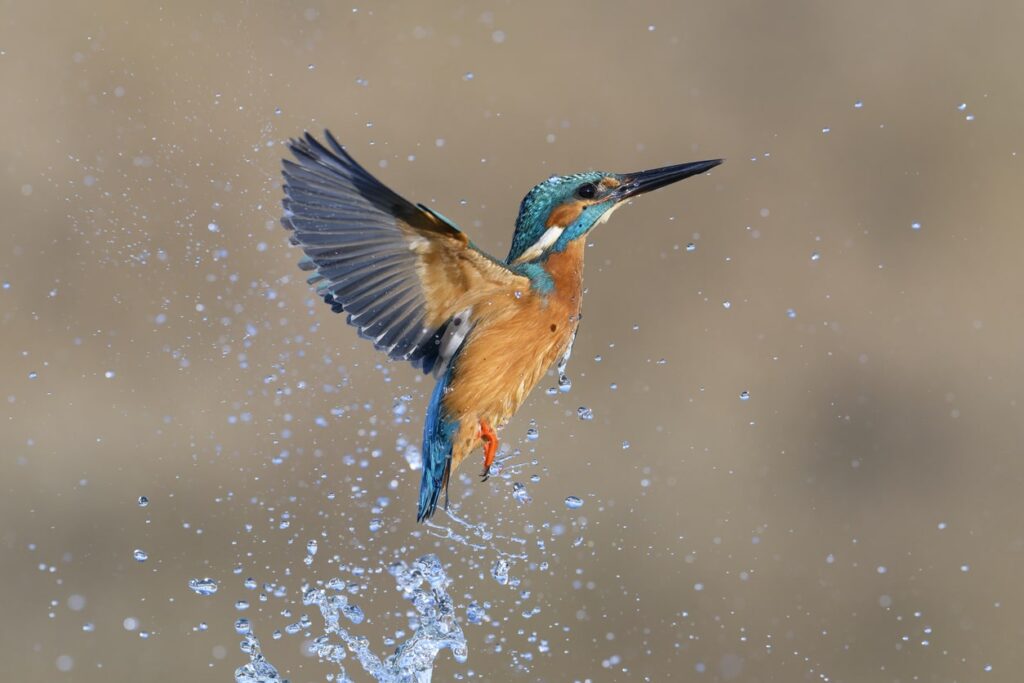
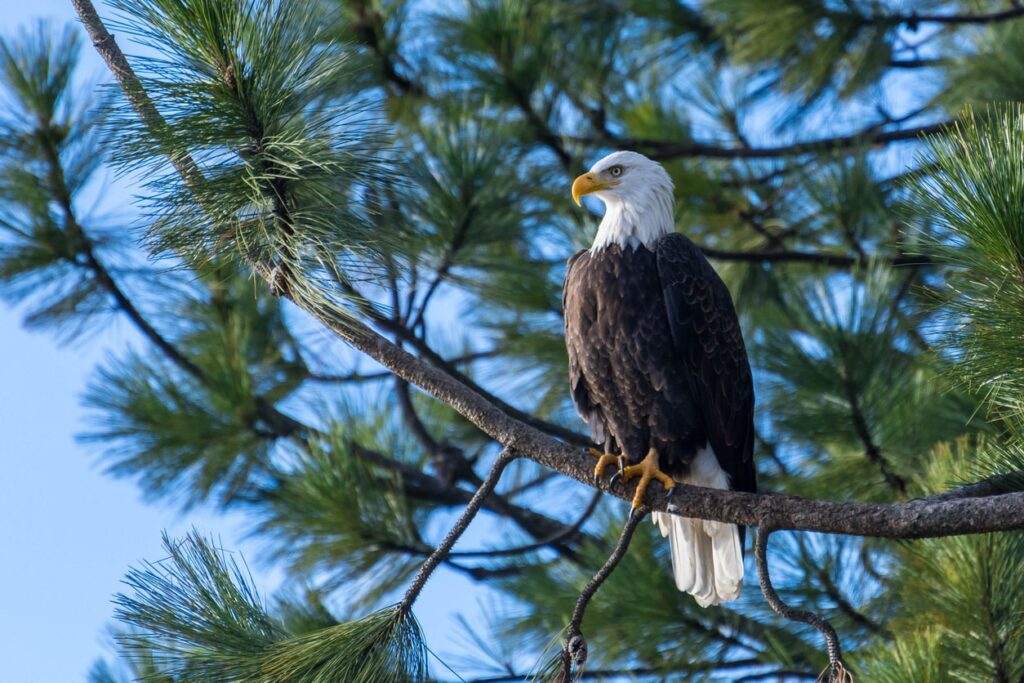
A Sign of Strength: Bald Eagles Return
In recent years, Cherokee has seen the exciting return of one of America’s most iconic birds, the Bald Eagle. While nesting sites are protected and not publicly disclosed, sightings have become more frequent in the region. Their comeback is a powerful reminder of the importance of conservation and the resilience of local ecosystems. Keep your eyes on the treetops and waterways, you might just spot one soaring overhead.
Recommended Birdwatching Locations
Nunadyeli Trail
The Nunadyeli Trail starts at the Museum of the Cherokee People and ends at the historic Unto These Hills Theatre. This trail offers dense woodland habitats ideal for spotting warblers, thrushes, and other forest species.
Kituwah Mound
Known as the “Mother Town” of the Cherokee, Kituwah Mount is an open, sacred site which sits near the Tuckasegee River. It’s a peaceful spot for viewing a wide variety of birds, especially during migration.
Best Time for Birdwatching
Late April through May is the prime birdwatching season. Many migratory birds return from South America during this time, making their way through the Smokies and establishing breeding territories.
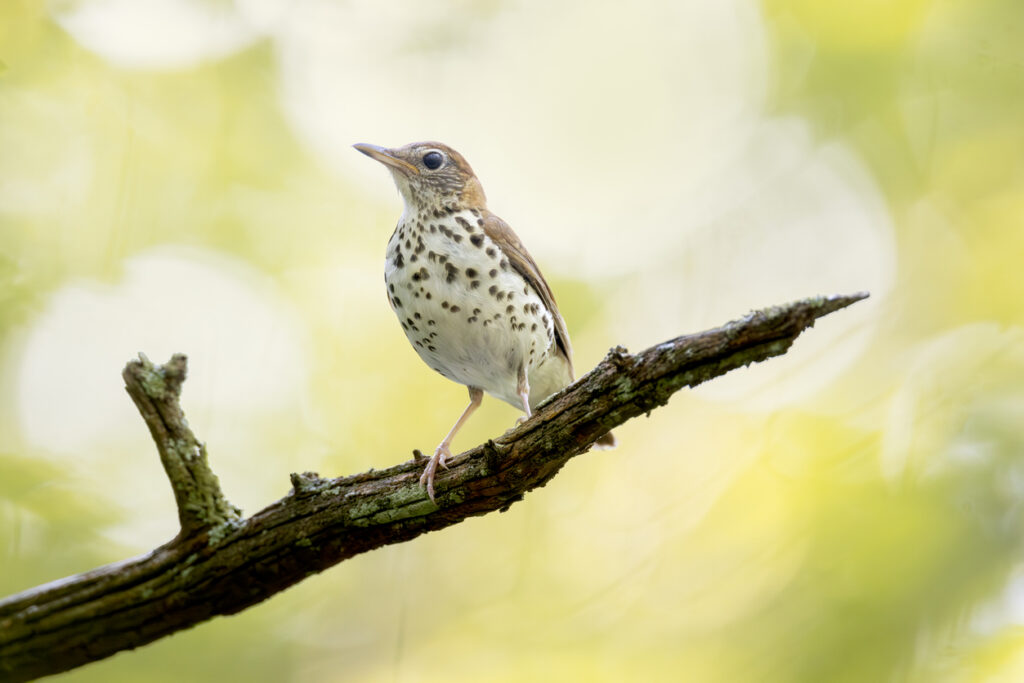
Wildlife Photography Tips
Cherokee offers excellent conditions for photographing wildlife, especially elk and birds in their natural habitat. To make the most of your time outdoors, keep these photography basics in mind.
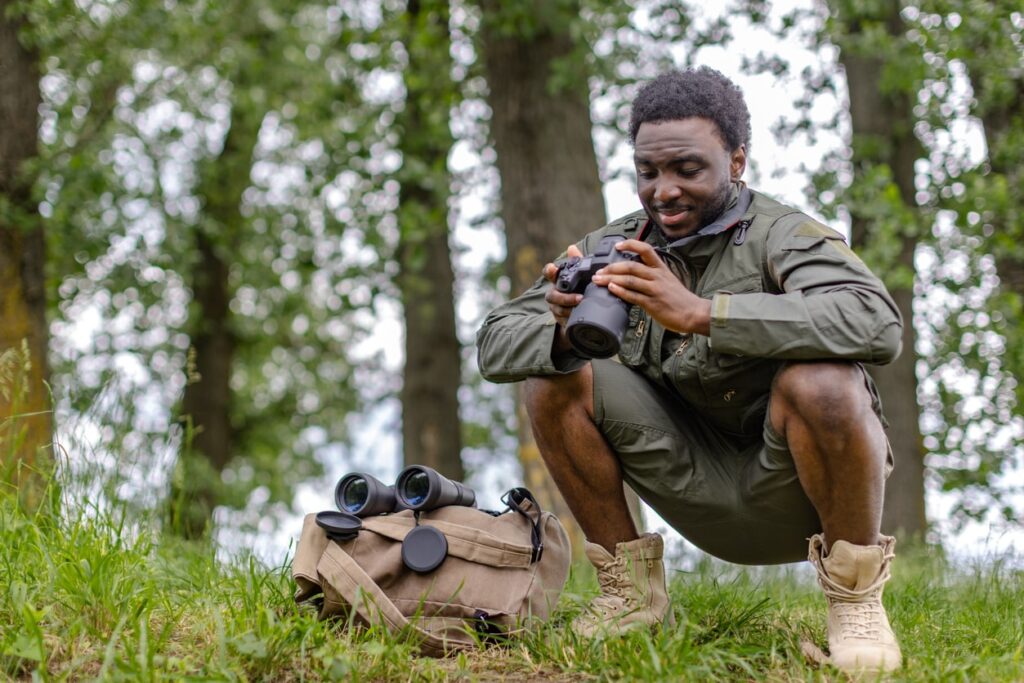
Camera Settings for Wildlife
- Use a fast shutter speed (1/1000 sec or faster) to freeze motion, especially when photographing moving animals or birds in flight.
- Adjust ISO and aperture based on lighting. Low light may require a higher ISO but try to keep noise to a minimum for better image quality.
- Use continuous autofocus and burst mode to track movement and capture multiple frames.
Lighting and Timing
- Shoot during golden hour (early morning or late afternoon) for the best natural light and higher wildlife activity.
- Avoid midday sun which creates harsh shadows and low contrast in your images.
Ethical Photography Practices
- Stay a safe distance away. Use a telephoto lens instead of trying to get physically close.
- Never feed, call to, or attempt to attract animals.
- Stick to trails and viewing areas to avoid disturbing natural habitats.
- Follow all posted rules on tribal and park lands. Violations can result in fines and harm to wildlife.
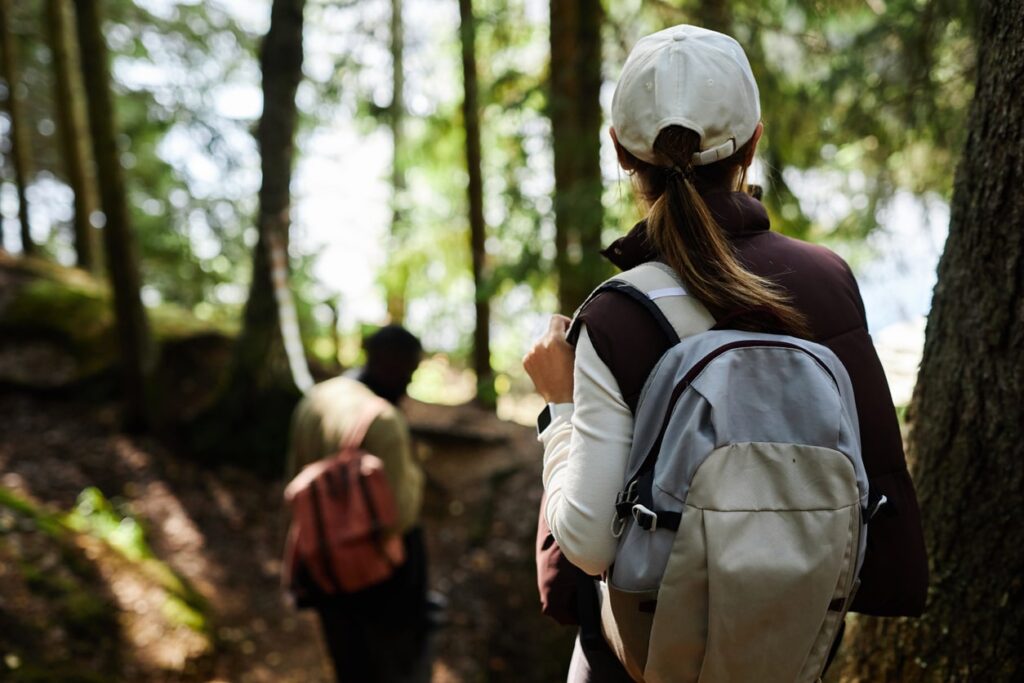
Best Times to Visit for Wildlife Watching
Wildlife activity in Cherokee changes with the seasons. Planning your visit around these peak times can increase your chances of seeing elk, birds, and other animals.
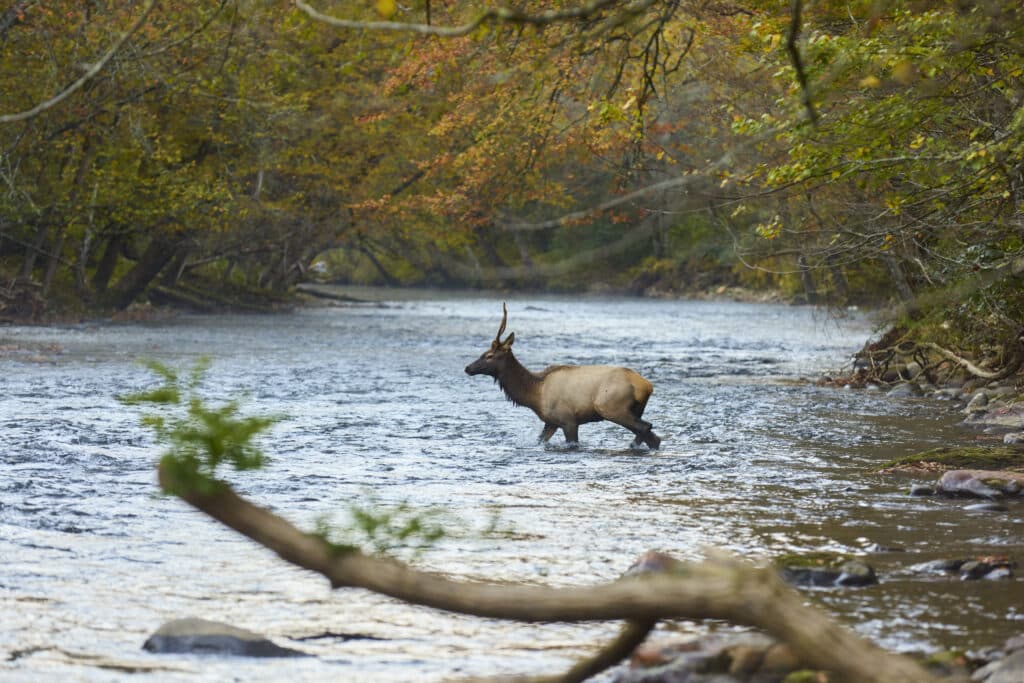
Seasonal Wildlife Activity
- Spring (April–May): Excellent for birdwatching. Migratory species return, and deer fawns begin to appear.
- Summer (June–August): Animals are active in the mornings and evenings. Lush foliage makes for beautiful landscape shots.
- Fall (September–October): Best time for elk viewing during the rut. Cooler temperatures bring more visible activity throughout the day.
- Winter (December–February): Less vegetation makes animals easier to spot. Quieter trails and fewer crowds.
Time of Day
Wildlife is most active early mornings (sunrise – 9 a.m.) and late afternoons to dusk.
Avoid midday when temperatures are higher and most animals rest in shaded or hidden areas.
Plan Your Wildlife Adventure in Cherokee
Wildlife watching in Cherokee is an experience you won’t forget—but it’s just one part of what makes this place special. After spotting elk at sunrise or tracking rare birds along a forest trail, you’ll find even more to explore including scenic hikes, rich Cherokee cultural sites, trout fishing, waterfalls, and outdoor adventures around every bend.
So don’t rush it. Take the time to discover everything Cherokee has to offer, on and off the trail. Start planning your visit today!


